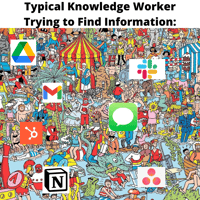Marie Kondo is my hero.
How Do You Teach Others How to Use Your Software Systems?

Last week, I explained that everyone (including the Business Owner or Leadership Team) should be a ‘Power User’ of the software which runs their business.
Specifically:
- Email - everyone should be at Inbox 0 and responding to emails within 24 hours
- Internal Messaging (ie. Slack/Teams) - everyone should be responding to messages within 24 hours
- Tasks/Project Management (ie. Asana or Notion) - everyone’s projects are up-to-date with milestones and a recent status update, Inbox 0 for notifications, and no overdue tasks.
- CRM (ie. Hubspot) - everyone’s deals and tasks are up-to-date.
- Documentation (ie. Notion) - everyone’s Role and Responsibilities are documented as well as the core company processes they work on.
When new team members join, a question which comes up is Who and How will we train them to become a Power User?
First, each tool (Asana, Hubspot, Notion, etc) offer free training courses to be ‘certified’ in the tool. This is the place to start.
But, it’s not enough.
There needs to be documentation for the specific way a Team Member is intended to use each tool within this specific team.
For example, there are many different ways to set up Channels in Slack or Projects in Asana.
But, how does THIS team set up Channels in Slack or Projects in Asana?
New Team Members also need to know:
- When and Why to Use Each Tool - ie. When should I Email vs Slack? What should I discuss in Slack vs Asana?
- What are the Daily / Weekly / Monthly Expectations for Each Tool?
- What are the ‘Team Rules’ for Each Tool? ie. What if you aren’t hearing back from someone in a tool?
- Requests - how do I request a new Slack Channel or a new Asana Project?
- Best Practice How To’s - step-by-step processes.
In order to compile this documentation, I recommend using:
- Notion to house all of the documentation
- Scribe for step-by-step How To’s/Checklists
- Loom for screen-share video recordings
Designate a current Power User to compile the documentation if there isn't any currently. It will take some time to create it initially but then just requires regular maintenance and updating.
Everyone on the team will need training, easy access to the documentation, and regular coaching with someone versed in the tool’s best practices and the team’s rules.
In my humble opinion, it’s best to work with an outside Consultant on this who knows the tools well, is good at coaching, and can share best practices from working with hundreds of other clients on implementing these tools.
This Consultant’s gift should be in setting up and organizing effective systems for teams to get work done.
If you need help with this, let me know!



